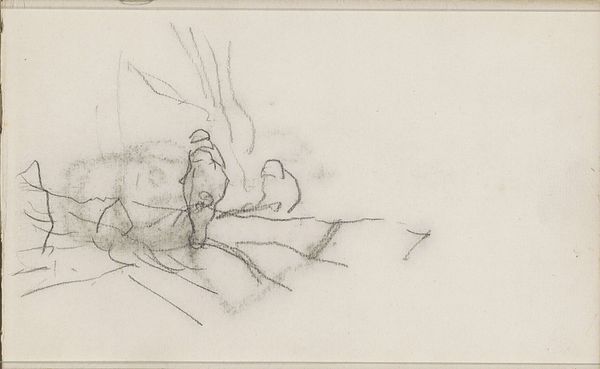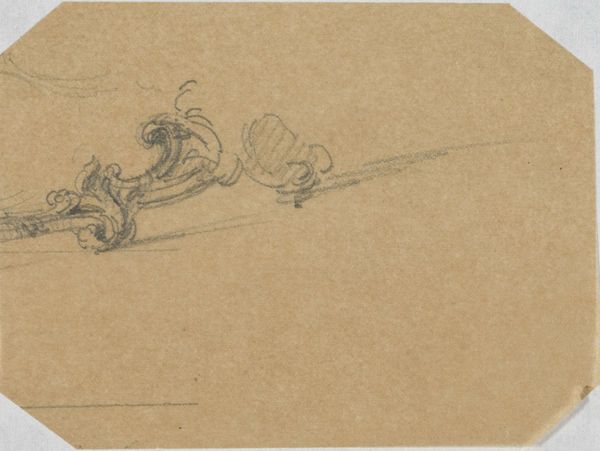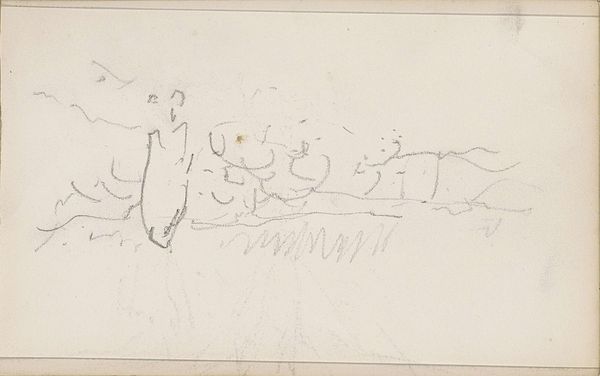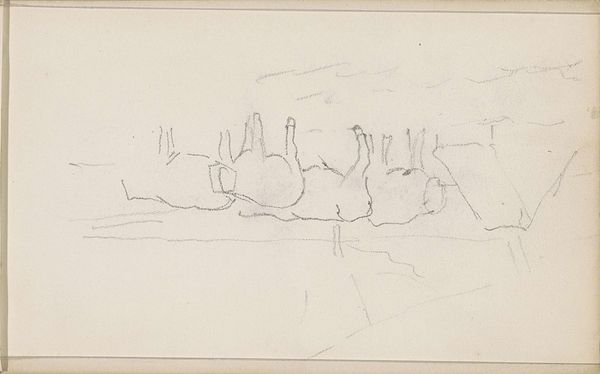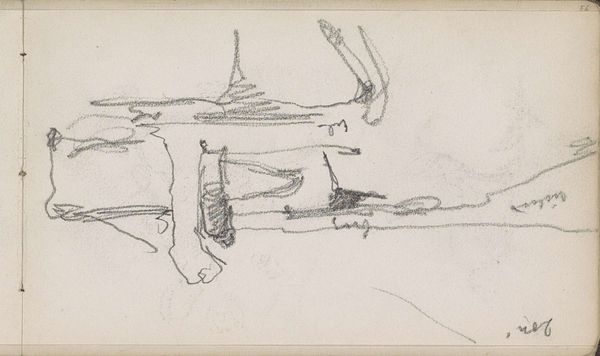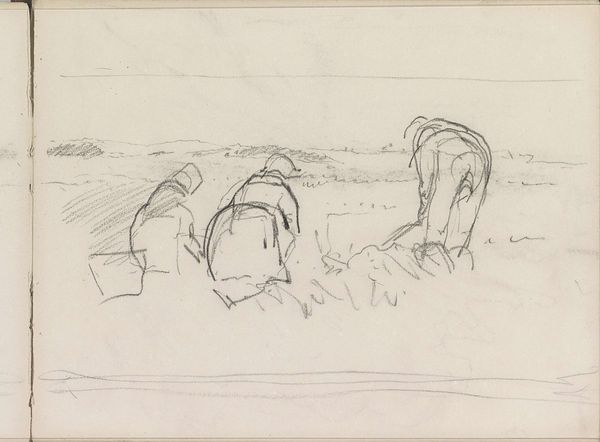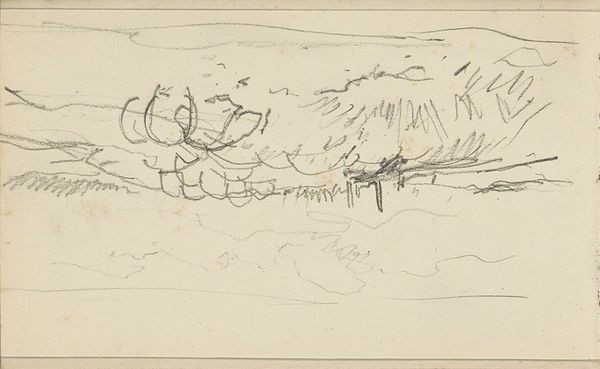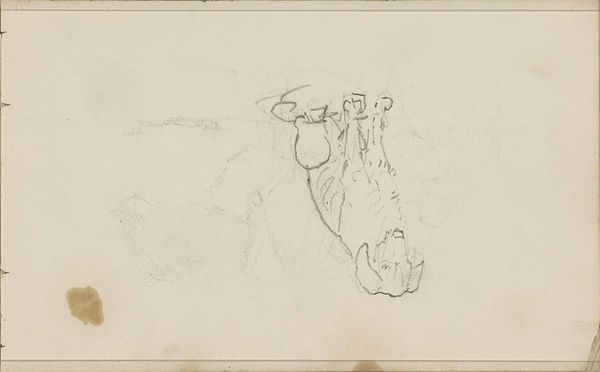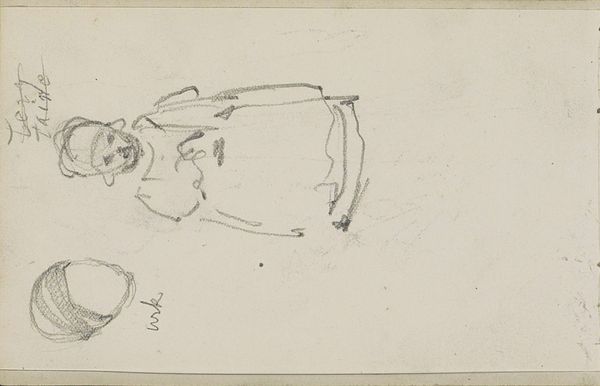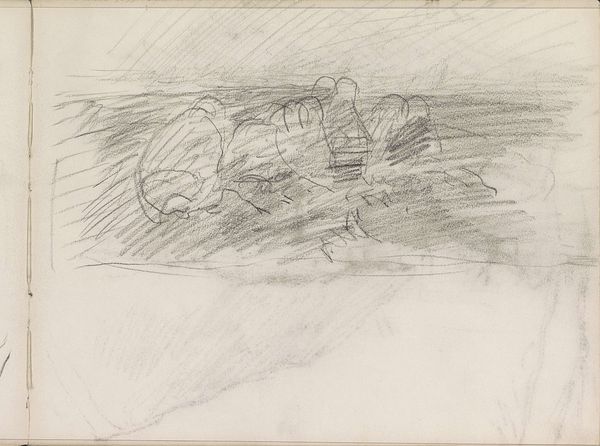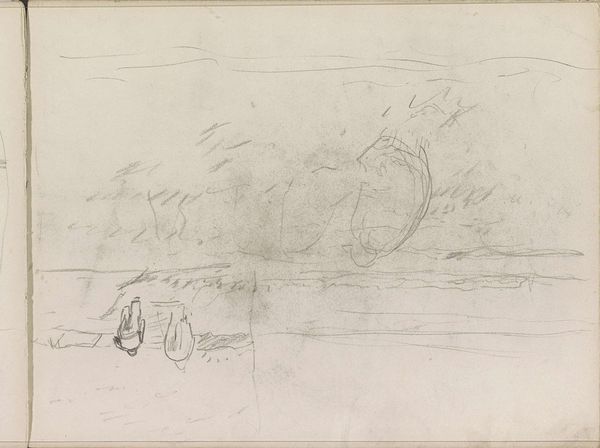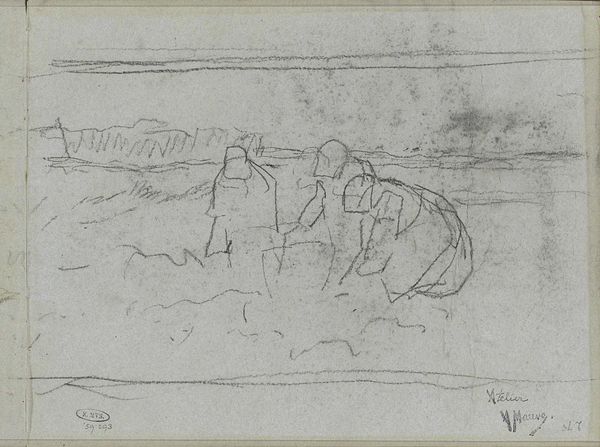
drawing, pencil
#
drawing
#
impressionism
#
landscape
#
pencil
#
realism
Copyright: Rijks Museum: Open Domain
Curator: Here we have Jozef Israëls' drawing, "Herder met een schaapskudde in een weiland"—"Shepherd with a Flock of Sheep in a Meadow," created sometime between 1834 and 1911. It’s rendered in pencil. Editor: It has a certain lightness to it, almost ethereal. The lines are so delicate, giving the scene a hazy, dreamlike quality. It's definitely a quick impression of a moment. Curator: Exactly. Israëls was deeply influenced by the social realism of the Hague School. While not explicitly political, this work portrays the lives of rural laborers. Sheep farming and herding were crucial to the Dutch economy and rural life. You can see the figures rendered as if worn down from labor. Editor: I'm drawn to the simplicity of the medium. Just pencil on paper—so accessible, immediate. You think about Israëls sketching this scene perhaps right there in the field, his tools humble but capturing something fundamental about the relationship between humans, animals, and the land. Curator: His decision to use pencil allowed him to quickly capture these impressions while emphasizing the unvarnished realities of rural existence. During this period there was growing attention toward peasant life and the impact of industrialization, where art served as both a documentation and form of social critique. Editor: The composition is interesting, too. The horizon line is low, and he groups the sheep in irregular bunches. Curator: I think Israëls masterfully presents an intimate look into rural life during a period of significant social change, depicting figures of labor in quiet moments rather than idealizing it. Editor: For me, it speaks volumes about the value we place on natural resources and raw materials to create objects. This connects to social conditions and access. In a world where our connection to nature is more complex than ever, I find a return to elemental methods to be important. Curator: Agreed, a reminder of the simple origins that shape society's larger political and economic landscape. Editor: I'm left thinking about the labor and land represented here and who is privileged enough to even produce these images, and where. Curator: Indeed, seeing this today invites contemplation about enduring labor conditions, and whether representation translates into any substantive changes for the laborers it portrays.
Comments
No comments
Be the first to comment and join the conversation on the ultimate creative platform.

